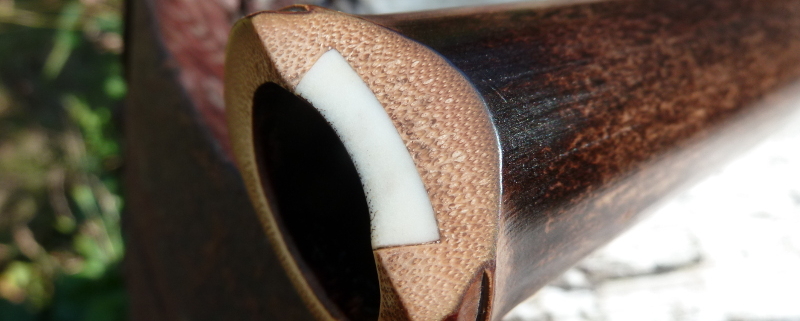
EDO Ji-nashi 2.0 in C – Kurodake
Thanks to what I could learn from different masters and makers during world shakuhachi festival (Shimura Zenpo and Dan Shinku in particular) giving lectures and workshops on this type of shakuhachi, I could go deeper in the understanding of differences between ‘modern’ ji-nashi and the ji-nashi shakuhachi played in Edo period by komuso monks. I had already experimented on this after meeting with Maekawa sensei in Denmark in 2017.
The bore, the embouchure, hole placement and utaguchi insert are made in a very different way. The attention is exclusively focused on tone colour (neiro) following an acoustical aesthetic different that what we are in search of nowadays.
The result is in very sweet flutes, rather weaker in volume, non-tempered (due to evenly placed holes, Chi for instance is a bit higher) giving a very different feeling and way of playing.
My personal feeling is that this type of shakuhachi leads to a very inner feeling when blowing into; an intimate research of sound in strong relation to the bamboo.
These are flutes well suited for lonely meditative practice.
Made in a nice black bamboo with beautiful roots end and 7 nodes, this ji-nashi shakuhachi of Edo style is in C (about 60cm) with several layers of pure urushi and an ancient shaped (myoan) utaguchi inlay made from very strong deer horn.


